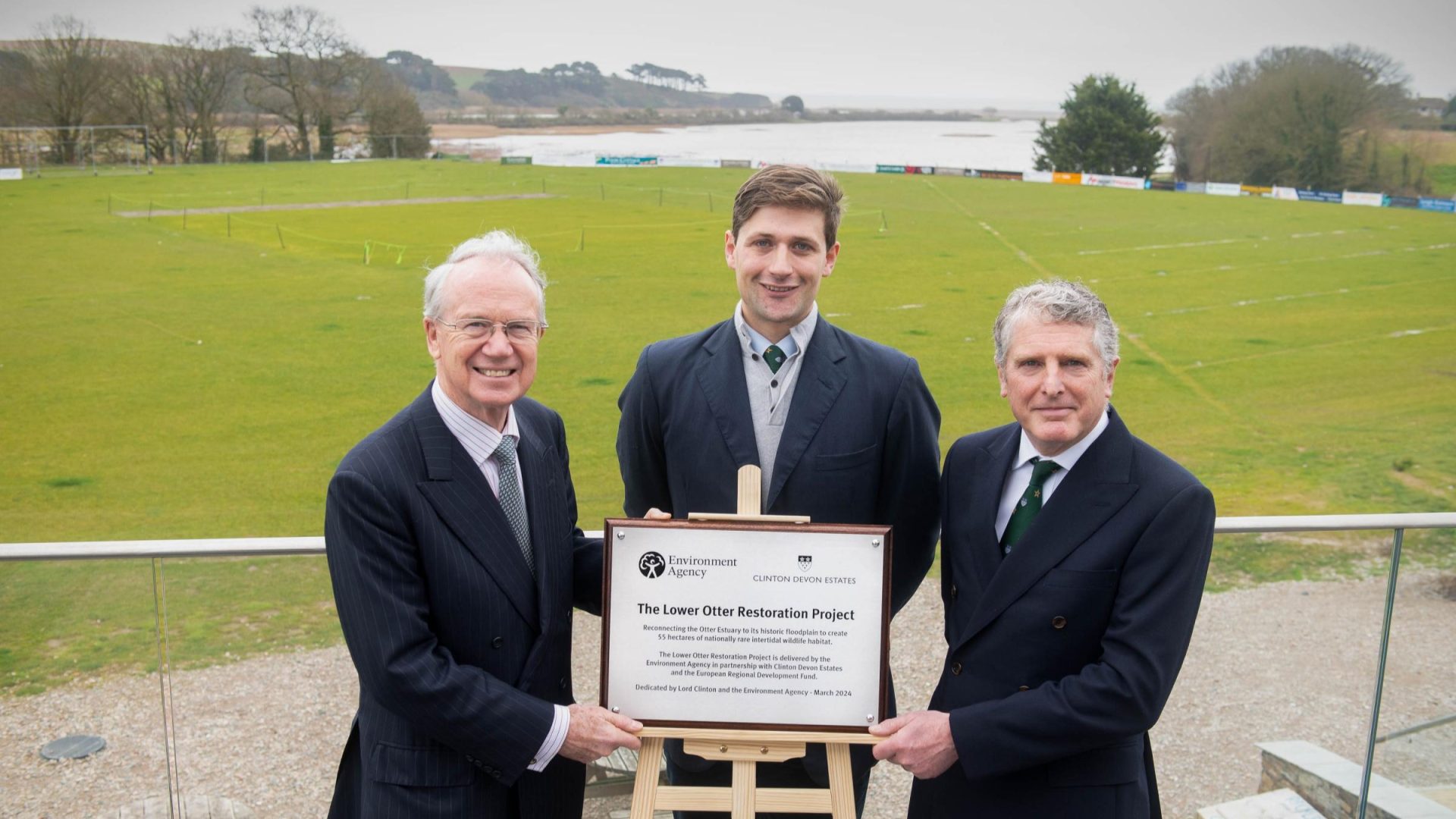The Environment Agency, Clinton Devon Estates, local representatives and project partners gathered recently to celebrate the successful completion of the Lower Otter Restoration Project.
This impressive landscape adaptation project has set the stage to create 55 hectares of nationally rare wildlife habitat; compensating for regional habitat losses due to sea level rise.
This involved reconnecting the River Otter, estuary and floodplain, and delivering a more sustainable landscape, rich in wildlife, with the capacity to adapt. In doing this the project was also able to make homes, businesses and community infrastructure more resilient to the effects of sea level rise and flooding from the river.
Change in the valley was desperately needed as rising sea levels and increased storminess due to climate change were putting the 200 year-old tidal embankment (created to enable the intensification of farming) at increasing risk of failure.
Unmanaged failure of this embankment would have led to environmental damage with the loss of protected species and exposure of a former landfill to the tide. Other important community infrastructure would also have been lost including a key road, recreational facilities and footpaths.
The Environment Agency, working in partnership with landowner Clinton Devon Estates, started construction on the Lower Otter Restoration Project in 2021.
Work included:
- Building a 30-metre flood resilient, raised road and road bridge
- Constructing a new 70m footbridge to ensure continuity of the South West Coast Path
- Protecting the former landfill site
- Relocating Budleigh Salterton Cricket Club out of the floodplain
- Raising and improving over 3 kms of public footpaths
The project undertook landscape improvements, working in partnership with National Landscapes, to remove over 1.5kms of overhead cables and planting over 22 thousand trees and 1.5 kilometres of species rich hedgerow to further enhance the wildlife habitats. These improvements can all be enjoyed from the improved footpaths and the seven purpose-built wildlife viewing areas.
A major milestone for the valley was reached last September when the team created a 70m breach in the tidal embankment, allowing the tide to flow back into the historic floodplain for the first time in 200 years.
The Lower Otter Restoration Project has created around 55 hectares (nearly 136 acres) of valuable carbon capturing wetland which is already attracting rare and declining wetland birds, particularly waders including little egret, oystercatcher, curlew, godwits, avocet, and plovers. It has even been the hunting ground for osprey.
As part of the celebration, Alan Lovell, Chair of the Environment Agency and John Varley, Chief Executive of Clinton Devon Estates, unveiled a plaque to commemorate the project.
Alan Lovell said:
“The restoration of the Lower Otter River is a fine example of the strengths of collaborative working to find solutions to the impacts of climate change.
“Restoring and reconnecting the floodplains has provided multiple benefits for the wading birds which call this landscape home and the people who live locally too, with improved resilience to flooding and new opportunities to connect with the natural world.”
The Lower Otter Restoration Project site has recently been protected for the future through an extension of the East Devon Pebblebed Heaths National Nature Reserve
Dr Sam Bridgewater, Director of Environment Strategy and Evidence, Clinton Devon Estates said:
“We have been delighted with how nature is thriving in this greatly enhanced and expanded wetland with almost every week bringing a new species sighting. It has also been wonderful to see the overwhelmingly positive response from the public who can easily access the site and connect with nature.
“Over the coming years we will continue to record how the habitats evolve and how wildlife benefits with important research work supported by a strong team of local citizen scientists
“We are very proud to have the Otter Estuary recognised as a National Nature Reserve. The recently completed restoration project took over a decade to plan, fund and deliver.
“To have the site’s conservation value recognised in this way makes it all worthwhile. The restoration work could not have been undertaken without the support of the Environment Agency who were our project partners in this endeavour.”



